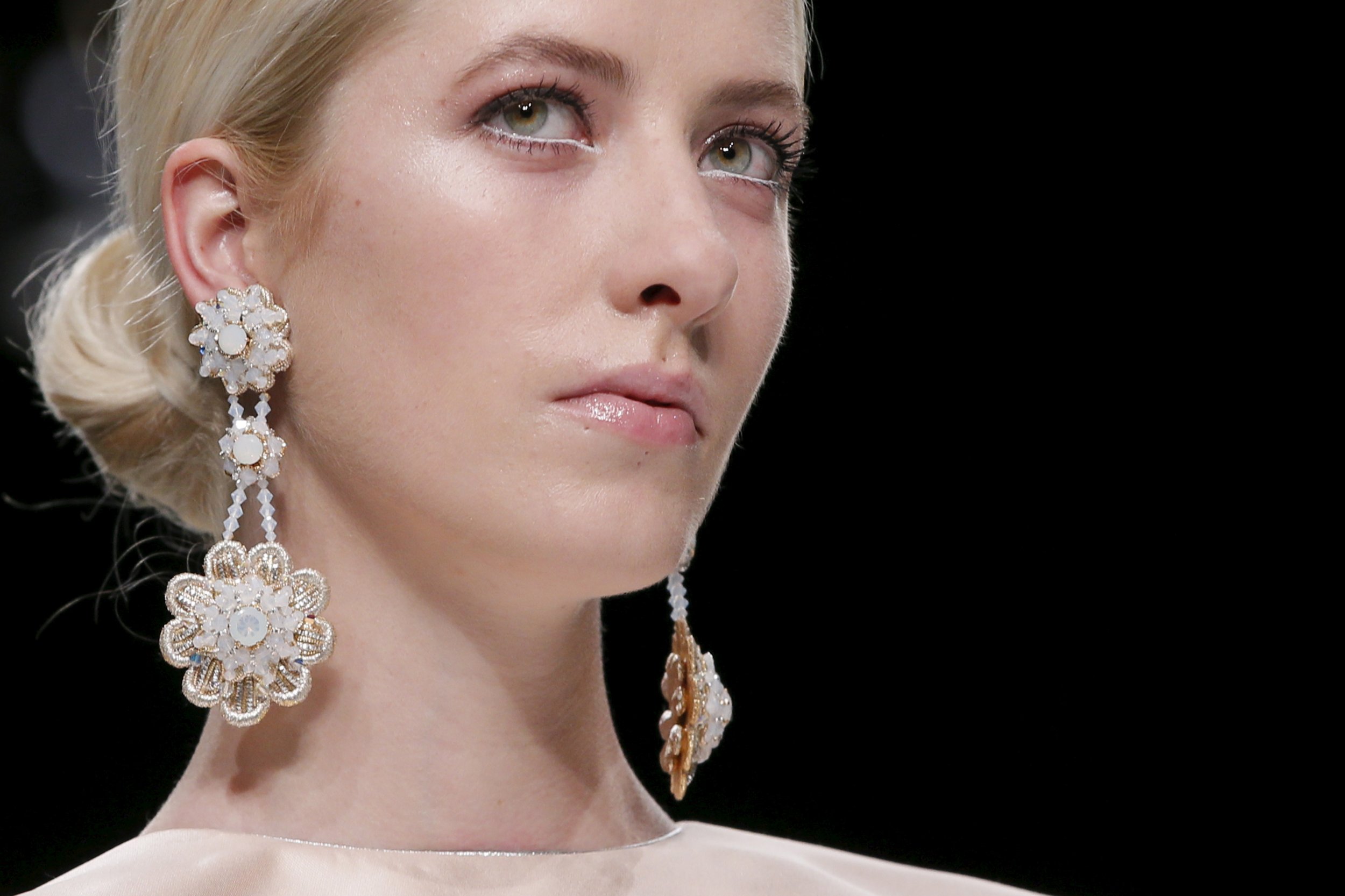
This article first appeared on the Conversation.
It's almost fashion week season, with events in London, New York and Paris all coming up, and I have one pretty sure prediction: The models won't be smiling.
In spite of some hasty claims that happy faces are now de rigeur, a blank expression is a perennial trait of model behaviour.
Detractors of fashion often complain about the convention of the non-smiling model and the industry's love of a surly pout has even been lambasted in films such as Zoolander. Catwalks have long been a smile-free zone—well, you can smile at the end when the designer pops up to present you with a bunch of flowers, but during the show the smile is a no-no. In fashion editorials too, smiles are like steak and chips on a model's plate: very rare.
The other thing that has always troubled me about this is how tiresomely predictable it is. Being predictable is great if you are a bus or an excellent cup of coffee—but surely the essence of fashion is to push aesthetic boundaries, to welcome change for change's sake.
So why do they pull the same miserable faces at every single show, every single season, every single year. Stupid, isn't it?
Haughty couture
Or maybe it isn't. The still expression of the fashion model is actually saying a lot of things. There's an interesting heritage to it too. It comes from the look of aristocratic disdain we see in centuries of royal portraiture which informed the 19th-century cartes de visite—society calling cards complete with what we might now term a "profile picture."
Fashion photography—think Horst P.Horst in the early to mid-20th century—has also long used the haughty look to suggest the status that the right clothes could bring to the wearer in a more socially mobile society. Essentially, this look says: "I am better than you," because it refuses to offer the open, smiling face of welcome that we conventionally use to engage someone we wish to interact with.
It also conveys the self-control, stiff upper lip and nonchalance of the European upper classes—"civilized" qualities which the "jolly old working classes" in those days supposedly found hard to convey.
To be emotionally controlled also suggests elevation above earthly concerns, access to higher knowledge and—in the modern world—an ability to be "unshakeable." This is even more impressive in what theorist Erving Goffman called " fateful situations"—situations in which you or your dignity and composure are at greater than average risk.
Tricky business
This is why we are impressed by steely-faced fighter pilots and nonchalant thieves—think Alan Rickman as the deadpan European supervillain Hans Gruber in Die Hard. Actually, Goffman was interested not so much in the control of emotions as he was in the control of the body, through which the ability to move smoothly and to appear unflustered became a much-admired trait.
Fashion models on the catwalk may not seem to be in an especially "fateful" situation, but in fact fashion and being fashionable is an extremely tricky business.
Let's imagine that I decided one day to turn up to work in a completely new look—a gold onesie, say. It's an unsettling thought, isn't it? All of us position ourselves somewhere in relation to trends, because trends dictate what it is acceptable to wear. My new identity would be considered in relation to this "new" look by those who see me and how it relates to the trends of the day.
The more my look diversifies from what is currently within the range of the "norm," the greater the threat to perceptions of me as 1) tasteful, 2) my own person and 3) sane. Your look, literally, can generate reverence—or ridicule.
Model expression
A model in a catwalk show has not personally chosen the clothing—in a sense their composure stands in for that of the designer. They must look unworried, unshakeable, able to move smoothly and exert fine control over hands and facial muscles because they, on the designer's behalf, are pulling off a confidence trick.
They must not exude personality, which would be inappropriate because it might distract from the clothes—and indeed the designer's personality as portrayed through those clothes. They are, after all, a "model." Nor must they look as if they are seeking approval, because that implies a lack of conviction in what is currently "right."
There must be an element of personal dignity at stake for a model forced to traverse the room in something that potentially makes them feel ridiculous—perhaps a traffic cone worn as jaunty hat, courtesy of Jeremy Scott for Moschino—but it is the designer who is on trial. In something outlandish, a smiling model could be seen as embarrassed or amused by the designer's slip. If the collection bombs, the House of Whoever stands to lose not just face but a fortune.
So the models can't afford to smile. Whatever else is going on in their heads, they've got to set the lips to otherworldly disdainful and unshakeable confidence—and just hope they don't trip over.
Vanessa Brown is senior lecturer in design and visual culture, Nottingham Trent University.
Uncommon Knowledge
Newsweek is committed to challenging conventional wisdom and finding connections in the search for common ground.
Newsweek is committed to challenging conventional wisdom and finding connections in the search for common ground.
About the writer
To read how Newsweek uses AI as a newsroom tool, Click here.








